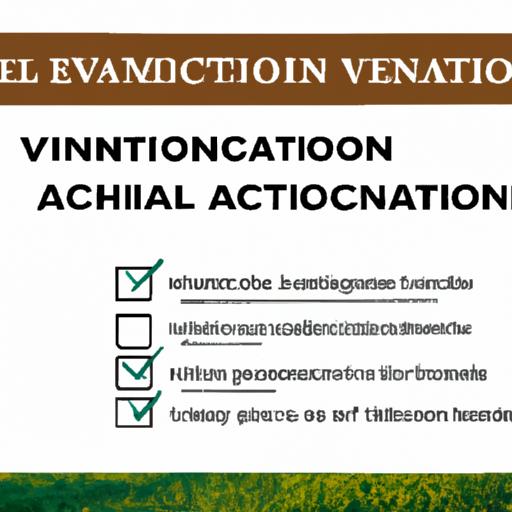Ensure equine well-being and event safety with the ea horse health declaration. Learn its importance, components, and how to complete it accurately.
Imagine attending a horse event where the health and safety of the magnificent creatures were compromised. The very thought is unsettling, isn’t it? As passionate horse enthusiasts, we all want to ensure the well-being of these majestic animals and create an environment where they can thrive. That’s where the EA Horse Health Declaration comes into play.
A. Importance of Horse Health Declarations
Horse health declarations play a vital role in safeguarding the equine population and the people who interact with them. These declarations serve as a comprehensive record of the horse’s health history, vaccinations, medications, and veterinary examinations. By requiring horse owners and handlers to complete these declarations, event organizers can effectively manage risks, prevent disease outbreaks, and ensure the overall welfare of the horses.
B. Overview of EA Horse Health Declaration
The EA Horse Health Declaration is a standardized form designed to gather essential information about the health status of horses participating in equestrian events. This declaration acts as a crucial tool for event organizers to assess the health risks associated with each horse and make informed decisions regarding their participation.
To comply with legal requirements and regulations, event organizers mandate the completion of EA Horse Health Declarations for every horse attending their events. These declarations provide a comprehensive snapshot of each horse’s health, enabling organizers to take necessary precautions, ensure the safety of all participants, and maintain the integrity of the event.
Now that we understand the significance of horse health declarations and have a brief overview of the EA Horse Health Declaration, let’s delve deeper into its components and understand how to complete one accurately. Together, we can create a safe and thriving environment for our beloved equine companions. So, let’s move on to Section II: Understanding EA Horse Health Declaration.
Understanding EA Horse Health Declaration

A. Definition and Purpose
The EA Horse Health Declaration serves as a critical document that horse owners and handlers must complete before participating in equestrian events. It captures crucial information about the horse’s health history, vaccinations, medications, and veterinary examinations. This comprehensive record allows event organizers to assess the health status of each horse, identify potential risks, and take appropriate measures to maintain a safe environment.
The primary purpose of the EA Horse Health Declaration is to prevent the spread of contagious diseases among horses and protect their welfare. By providing accurate and up-to-date information, horse owners and handlers contribute to the overall well-being of the equine community. This declaration acts as a proactive measure, enabling event organizers to make informed decisions regarding the participation of horses, thereby minimizing the risk of disease transmission.
B. Benefits of Implementing Horse Health Declarations
Implementing horse health declarations offers numerous benefits for both horse owners and event organizers. Firstly, it ensures transparency and builds trust among participants. By openly sharing the horse’s health information, owners demonstrate their commitment to maintaining a safe and healthy environment for all.
Moreover, horse health declarations facilitate early detection of potential health issues. With a comprehensive record at hand, event organizers can identify horses that may require additional veterinary scrutiny or specific precautions. This proactive approach helps prevent the spread of diseases and minimizes the chances of an outbreak during events.
C. Legal Requirements and Regulations
Compliance with legal requirements and regulations is essential to the successful implementation of horse health declarations. Event organizers must stay informed about local, regional, and national guidelines to ensure full adherence. These regulations often dictate the necessary information to include in the declarations, such as specific vaccinations and health certifications.
Furthermore, maintaining accurate and up-to-date horse health declarations demonstrates the professionalism and commitment of event organizers. By prioritizing the welfare and safety of all participants, organizers instill confidence in both horse owners and attendees, fostering a positive reputation for their events.
With a thorough understanding of the EA Horse Health Declaration, including its definition, purpose, benefits, and legal requirements, we can now explore the specific components of this crucial document. In Section III, we will dive into the various sections that make up the EA Horse Health Declaration.
Components of EA Horse Health Declaration

When it comes to completing an EA Horse Health Declaration, understanding its components is crucial. Each section serves a specific purpose in providing a comprehensive overview of the horse’s health status. Let’s explore these components in detail:
A. Personal Information of Horse Owner/Handler
This section of the declaration captures essential details about the horse owner or handler. It includes their full name, contact information, and any other pertinent information necessary for identification and communication purposes. Providing accurate and up-to-date personal information ensures effective communication between event organizers and horse owners.
B. Detailed Health History of the Horse
The detailed health history section requires a thorough account of the horse’s medical background. It includes any past illnesses, injuries, surgeries, or chronic conditions the horse has experienced. This information helps event organizers assess the horse’s overall health and identify potential risks or special considerations that need to be taken into account during the event.
C. Vaccination Records and Immunization Status
Vaccination records are an integral part of the horse’s health declaration. Horse owners must provide information regarding the vaccines administered to their horse, along with the dates and any booster shots received. This section ensures that the horse is up-to-date on necessary vaccinations, reducing the risk of contagious diseases and enhancing the safety of the event.
D. Current Medications and Treatments
In this section, horse owners must disclose any medications or treatments the horse is currently receiving. This information is crucial for event organizers to ensure that any necessary precautions or accommodations are made during the event. It also helps prevent any potential drug interactions or adverse reactions that could compromise the horse’s well-being.
E. Veterinary Examinations and Certifications
The final component of the EA Horse Health Declaration focuses on veterinary examinations and certifications. Horse owners must provide details of recent veterinary examinations and certifications, including any health certificates or fitness reports. This section ensures that the horse has undergone a professional evaluation and meets the necessary health standards to participate in the event.
By diligently completing each component of the EA Horse Health Declaration, horse owners and handlers contribute to maintaining a safe and healthy environment for all horses involved. Now that we have a clear understanding of the declaration’s components, let’s move on to Section IV: How to Complete an EA Horse Health Declaration, where we’ll delve into the step-by-step process and provide helpful tips for accuracy.
Section IV: How to Complete an EA Horse Health Declaration

A. Step-by-Step Guide
Completing an EA Horse Health Declaration may seem like a daunting task at first, but fear not! With a step-by-step guide, you’ll be able to breeze through the process and ensure the accuracy of your declaration. Here’s a breakdown of the essential steps:
- Gather the necessary information: Before starting the declaration, collect all relevant documentation regarding your horse’s health history, vaccinations, medications, and veterinary examinations. This includes records of past illnesses, treatments, and any ongoing medical conditions.
- Provide personal information: Begin by filling in your personal details as the horse owner or handler. This includes your name, contact information, and any other specifics requested in the declaration form.
- Document the horse’s health history: Provide a detailed account of your horse’s health history, including previous illnesses, injuries, surgeries, or any chronic conditions. Be as thorough as possible, ensuring you don’t miss any crucial information.
- Vaccination records and immunization status: Clearly list all the vaccinations your horse has received, along with the dates and any booster shots. This information is vital in preventing the spread of infectious diseases and protecting other horses.
- Current medications and treatments: Include any medications or treatments your horse is currently receiving. Mention the name of the medication, dosage, frequency, and duration of treatment. This ensures that event organizers and veterinarians are aware of any ongoing medical requirements.
B. Tips for Accurate and Comprehensive Declarations
While completing your EA Horse Health Declaration, keep the following tips in mind to ensure accuracy and comprehensiveness:
- Be honest and thorough: Provide accurate and honest information about your horse’s health. Omitting or misrepresenting details can have serious consequences for your horse’s well-being and the safety of others.
- Review and double-check: Take the time to review your declaration before submitting it. Make sure all information is correct, legible, and up-to-date. Double-check vaccination dates, medication names, and any other critical details.
- Seek veterinary assistance if needed: If you are unsure about any aspect of your horse’s health history or require guidance, consult your veterinarian. They can help you gather the necessary information and ensure the accuracy of your declaration.
- Update regularly: Keep your horse’s health declaration up-to-date. As new vaccinations, treatments, or health issues arise, make the necessary amendments to provide event organizers with the most accurate information.
By following these steps and tips, you can confidently complete an EA Horse Health Declaration that accurately reflects your horse’s health status. Now that you’re equipped with the knowledge of completing declarations, let’s move on to Section V: Importance of Accurate and Up-to-Date Horse Health Declarations.
Section V: Importance of Accurate and Up-to-Date Horse Health Declarations
Ensuring the accuracy and timeliness of horse health declarations is paramount to maintaining a safe and healthy environment for both horses and humans alike. Let’s explore the key reasons why accurate and up-to-date declarations are crucial.
A. Preventing Disease Outbreaks and Contamination
Accurate horse health declarations serve as a powerful tool in preventing the spread of contagious diseases within the equine community. By providing comprehensive information about a horse’s health history, vaccinations, and current medications, event organizers can identify potential health risks and take appropriate measures to mitigate them. This proactive approach significantly reduces the chances of disease outbreaks and the subsequent contamination of other horses, promoting the overall well-being of the entire equine population.
B. Ensuring Horse Welfare and Safety
Horse health declarations play a pivotal role in safeguarding the welfare and safety of our equine companions. A horse’s health status can greatly impact its ability to participate in events without compromising its well-being. Accurate declarations allow event organizers to assess the suitability of a horse’s participation based on its health condition, ensuring that only fit and healthy horses are involved. This not only protects the horse from potential harm but also promotes fair competition and responsible horsemanship.
C. Facilitating Effective Event Management
Efficient event management relies heavily on accurate and up-to-date horse health declarations. Organizers need to have a clear understanding of each horse’s health status to allocate appropriate resources, plan event logistics, and implement necessary safety measures. By having access to reliable information, event organizers can make informed decisions, streamline operations, and create a secure environment for everyone involved. From veterinary support to emergency response, accurate declarations enable organizers to optimize event management and enhance the overall experience for participants and spectators alike.
With the understanding that accurate and up-to-date horse health declarations are vital in preventing disease outbreaks, ensuring horse welfare and safety, and facilitating effective event management, we can appreciate the significance of completing these declarations with utmost diligence. In the next section, we will explore the step-by-step process of completing an EA Horse Health Declaration. So, let’s move on to Section VI: How to Complete an EA Horse Health Declaration.


